Pipevine swallowtail (Battus philenor)
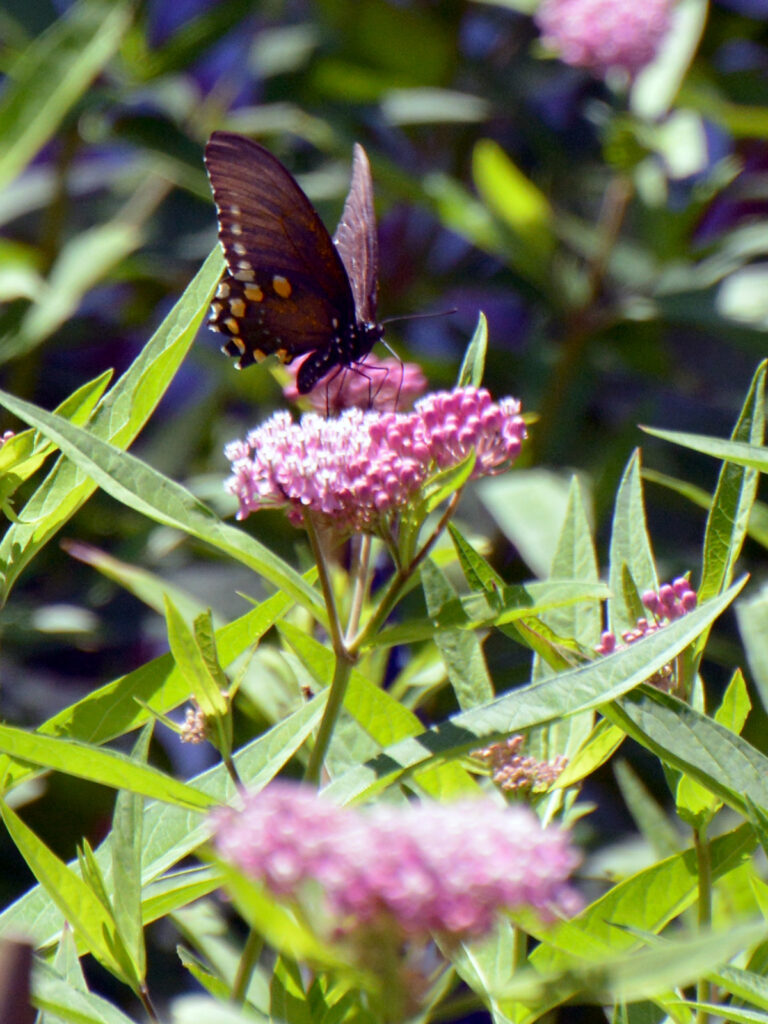
Although I planted a pipevine many years ago, when I noticed that this butterfly wasn’t listed in the Butterflies and Moths of North America list for my county, I felt rather foolish.
But the year after I had given up and severely pruned my pipevine, I saw this butterfly, confirmed by BugGuide.net!
HOST PLANTS: Pipevine (of course!)
More pipevine swallowtail info at Butterflies and Moths of North America
Black swallowtail (Papilio polyxenes)
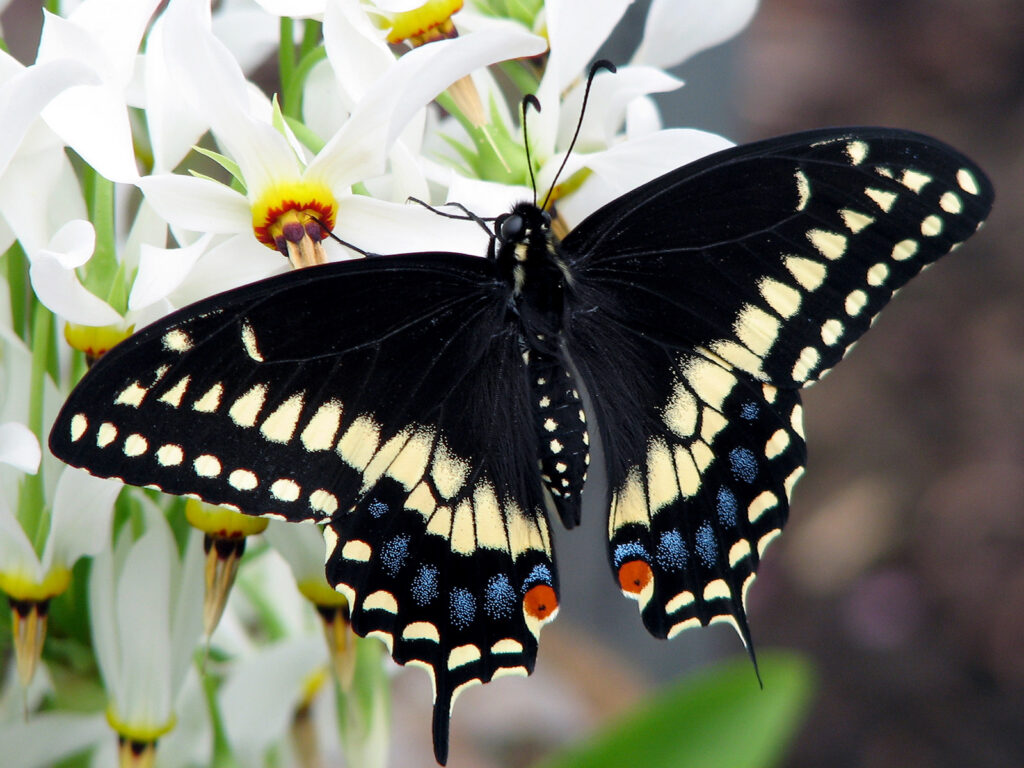
The black swallowtail is one of the three types of butterflies I raise inside.
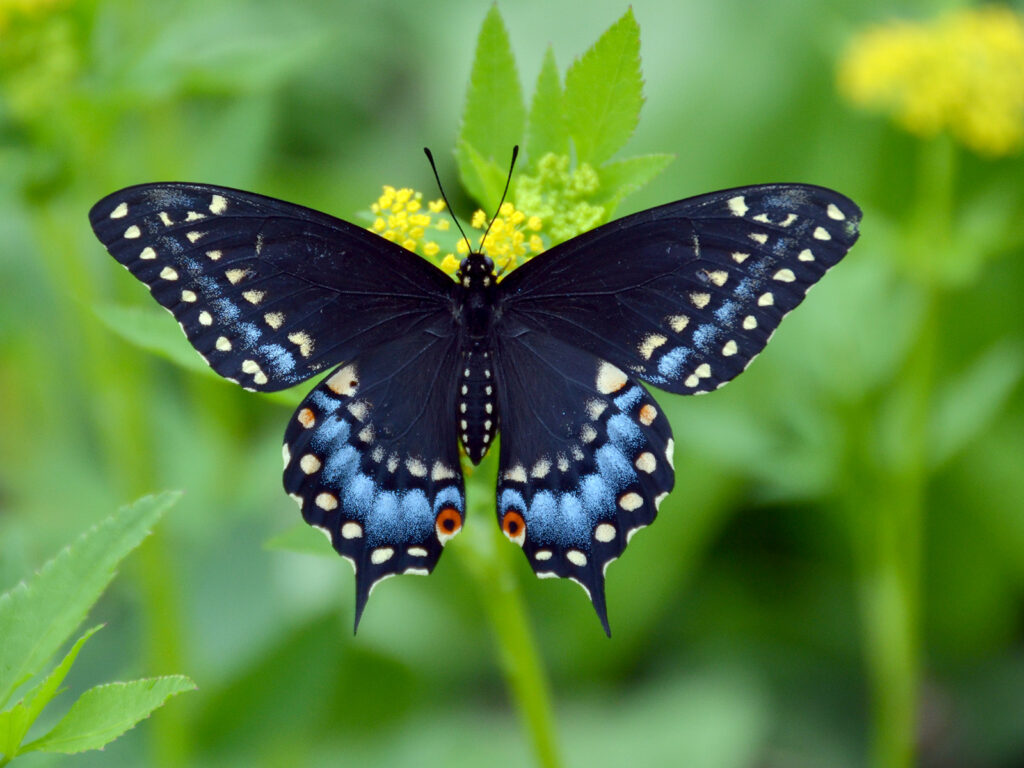
This female is sitting on its host plant, zizia.
HOST PLANTS: The native host plant is zizia; non-natives are parsley, dill, fennel, queen Anne’s lace and similar plants.
More black swallowtail info at Butterflies and Moths of North America
Giant swallowtail (Papilio cresphontes)
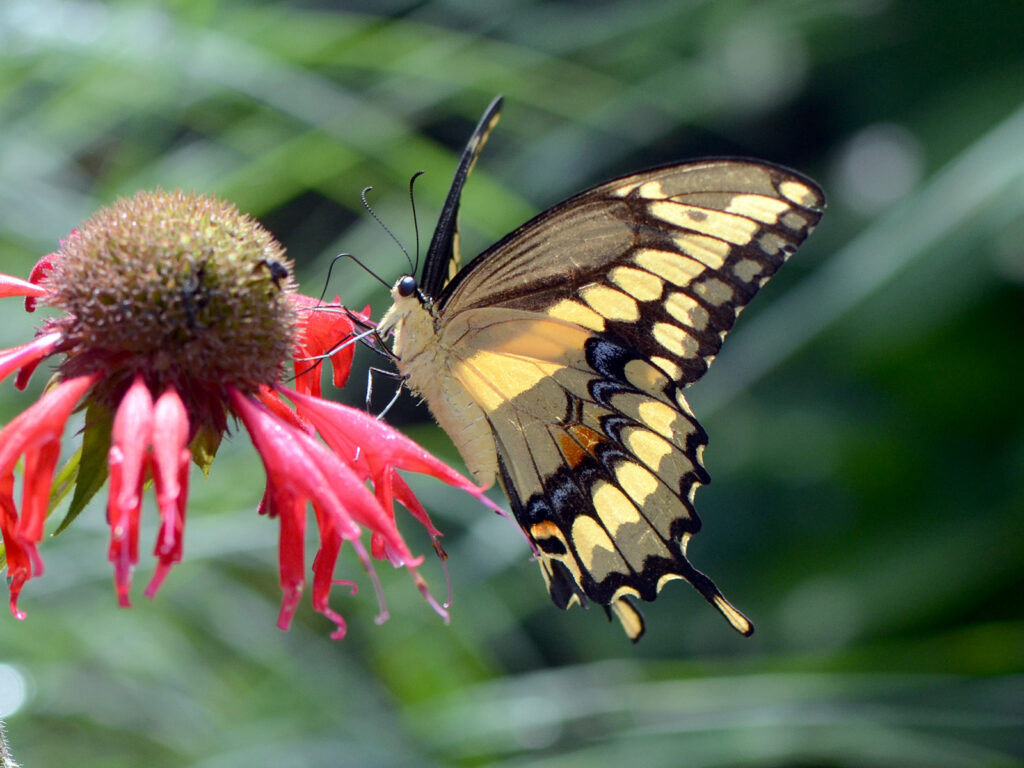
The giant swallowtail is the largest butterfly in the United States. It’s striking because it’s so large and so boldly-patterned. A very beautiful butterfly!
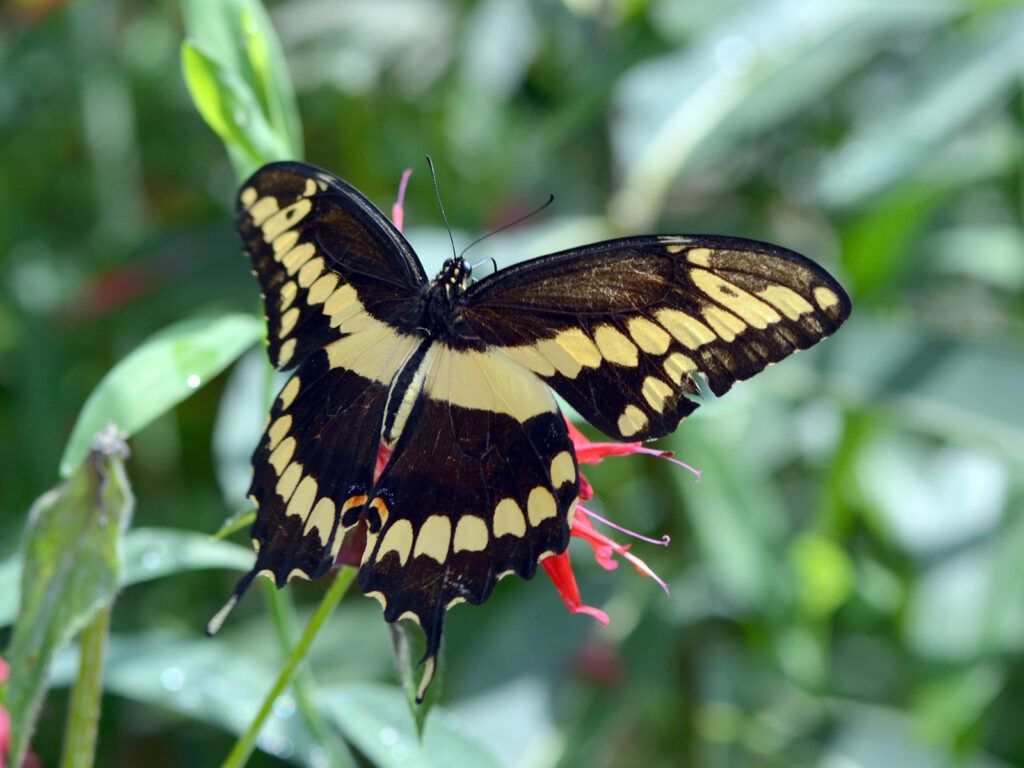
The upper part of its wings has a very bold pattern. I love the contrast with its tan body.
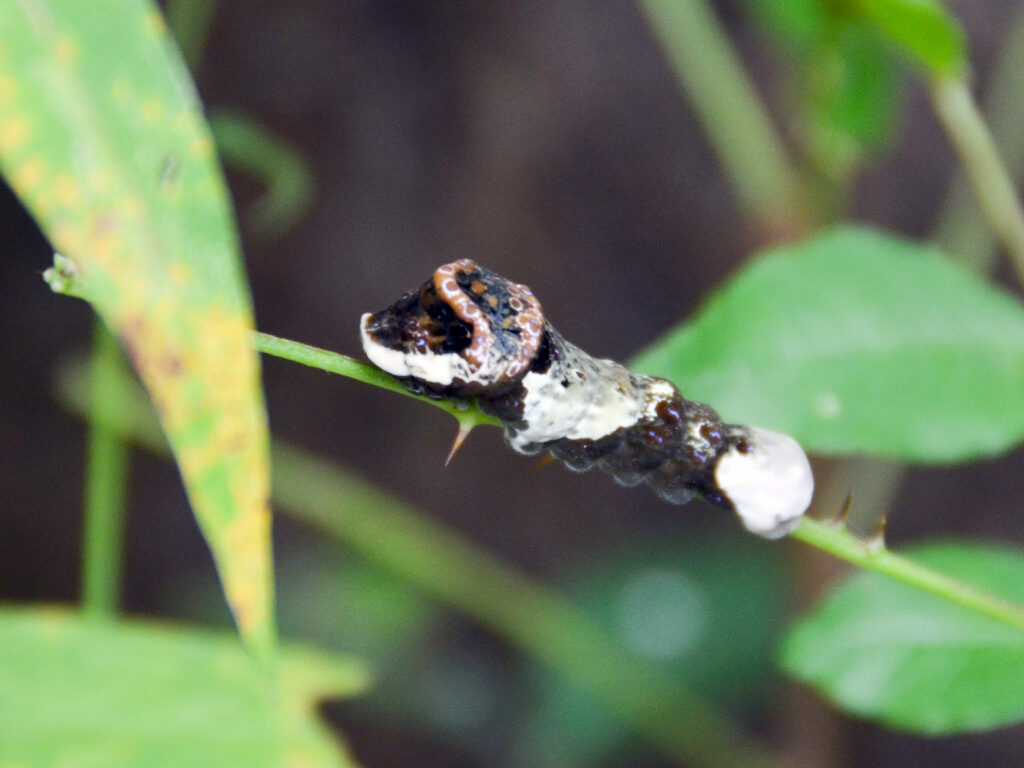
I was fortunate to see this caterpillar — though not in my yard. I saw it at a local native plant nursery that is growing its host plant at the request of one of its customers. It pays to request things! In this case, the nursery was growing just five or six little Ptelea trifoliata plants, but even these small plants had five or six caterpillars all over them. The power of host plants!
HOST PLANTS: Trees and herbs of the citrus family (Rutaceae) including citrus species, prickly ash (Zanthoxylum americanum), hop tree (Ptelea trifoliata), and common rue (Ruta graveolens).
More giant swallowtail info at Butterflies and Moths of North America
Eastern tiger swallowtail (Papilio glaucus)
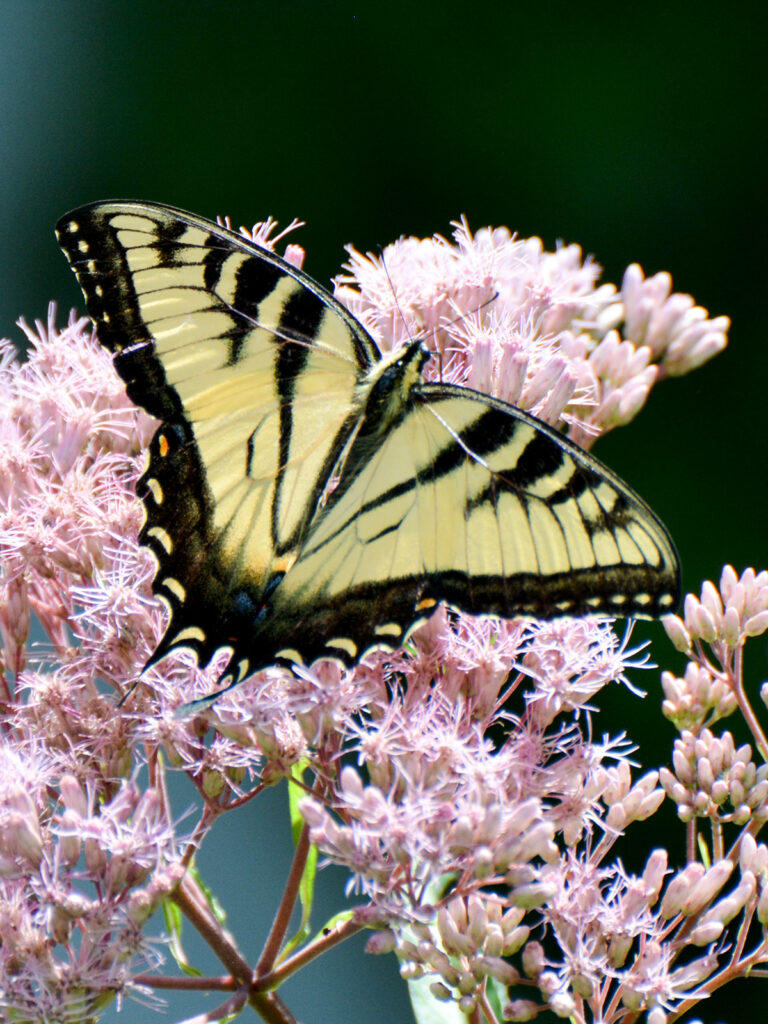
An eastern tiger swallowtail nectaring on joe-pye weed, a favorite nectar plant for many butterflies and bees.
HOST PLANTS: Tulip tree, black cherry tree, spicebush, red maple, American elm, and sassafras.
More Eastern tiger swallowtail info at Butterflies and Moths of North America
Spicebush swallowtail (Papilio troilus)
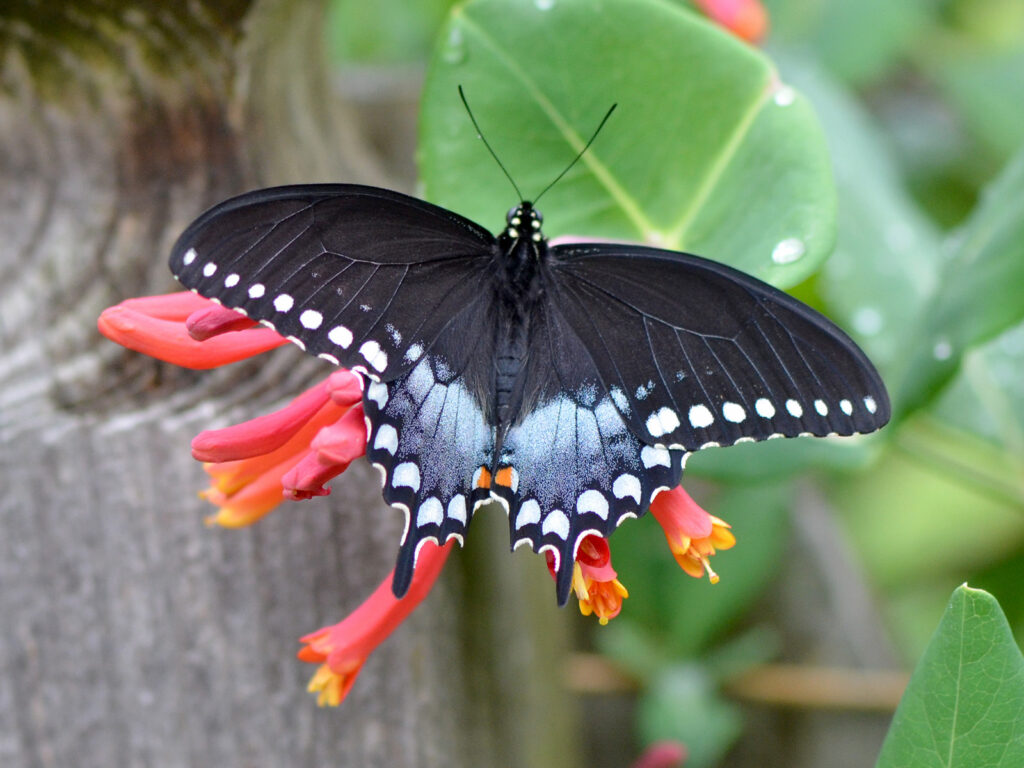
We have a lot of spicebushes, specifically for the spicebush swallowtail. We didn’t ever see spicebush swallowtails, though, for a number of years. Finally, we saw one, but we now realize that we may have seen them before, but thought they were a black swallowtail. It’s likely they’ve been around since we’ve noticed evidence of their presence: a rolled-up spicebush leaf edge that the caterpillars had made.
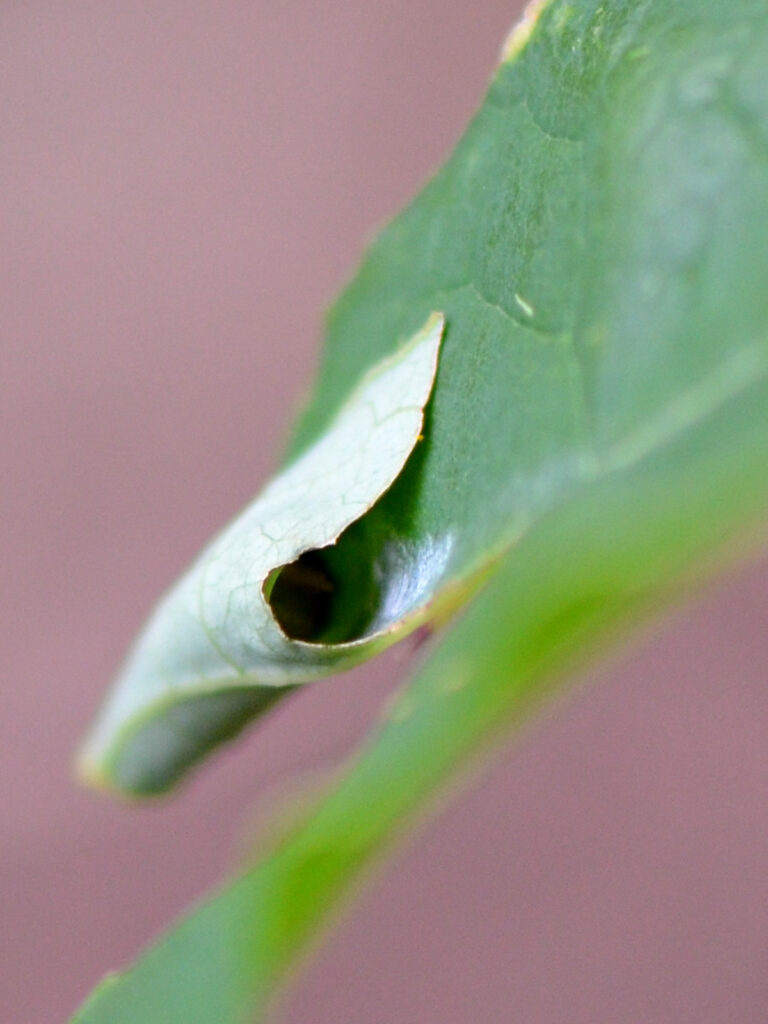
This is what the caterpillar does to the leaf. It stays hidden away until nighttime, when it comes out to eat. Learn more about how spicebush swallowtail butterflies grow.
HOST PLANTS: Spicebush of course! Also, sassafras.
More Spicebush swallowtail info at Butterflies and Moths of North America
